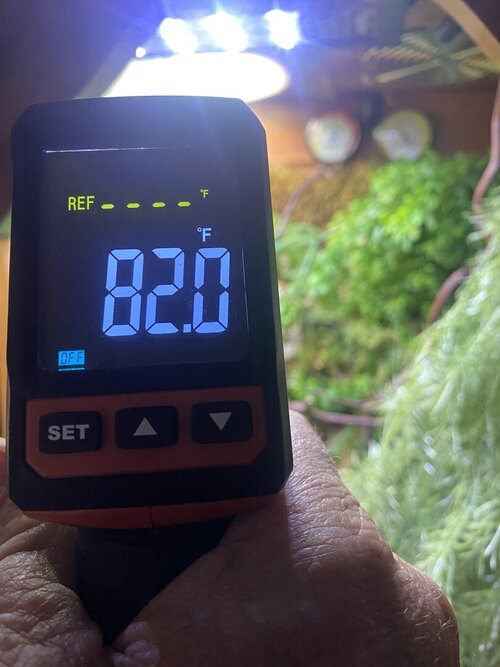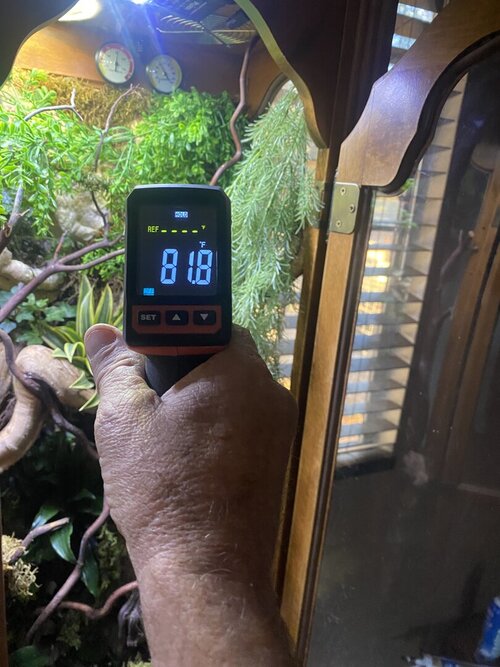crosscutts
Chameleon Enthusiast
So up here in the hills of the central coast California we’ve had some cold rainy weather outside temperature not much more than 45 , we’re on propane , so we don’t leave the heat on in the house during the day , House temperature at home is around 68 . Tank temperature Ambient top 74 48% humidity bottom tempered 68 40% humidity , basking site 79 -80 . Bold for basking is an 80 w Grow light , came home very light in color seem to be ready for bed for hours early , should he be warmer ? should I be trying 100 W incandescent? Domelight sits right on top of cage 4 to 6 inches from basking site .






